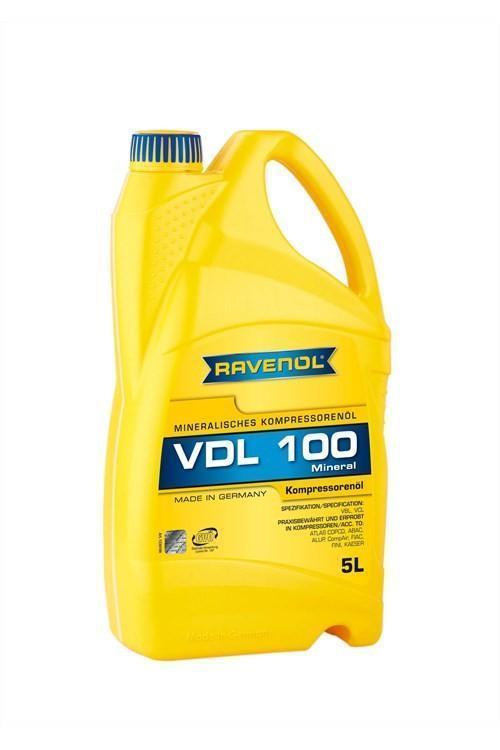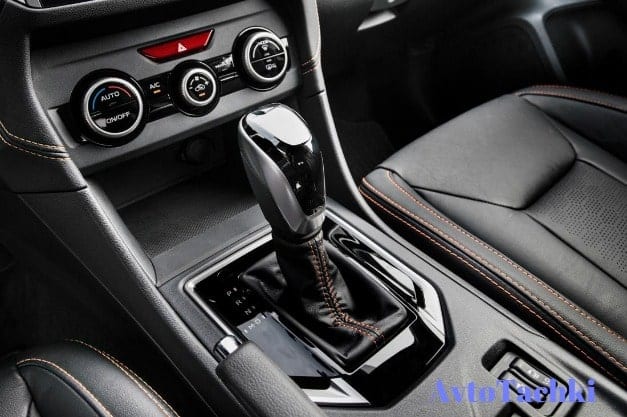
Mechanical gearbox
Content
Manual gearboxes are not as common in cars as they were before, but this does not prevent them from being in demand and relevant. This type of transmission is preferred by those drivers who like to control the process of shifting to higher or lower gears. For many motorists, the trip is not so interesting if the car is equipped with an automatic machine or tiptronic.
Manual transmissions are synonymous with reliability and are still in demand due to their maintainability and simplicity of the device. However, few people know what this device is, how it works. We offer you to get acquainted with the "mechanics" closer and understand the principle of the gearbox.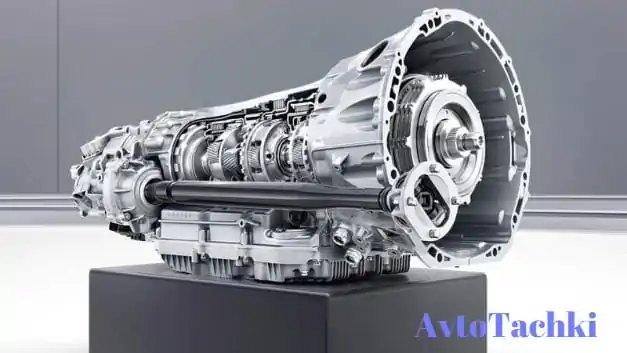
Principle of operation
A mechanical transmission is required to change the torque and transmit it from the engine to the wheels. The torque coming from the engine through the clutch pedal enters the input shaft of the box. Due to this, it is transformed by interconnected pairs of gears (steps) and transmitted directly to the wheels of the car.
All gear pairs have their own gear ratio, which is responsible for the number of revolutions and the supply of torque from the engine crankshaft to the wheels. An increase in transmission torque causes a decrease in crankshaft speed. With a decrease - on the contrary.
Before you change gears in a manual gearbox, you need to squeeze the clutch pedal, which interrupts the power flow from the engine. The beginning of the movement of a car always occurs from the 1st stage (except for freight vehicles), and the subsequent increase in transmission occurs gradually, with a successive change of the gearbox stages from low to high. The moment of switching itself is determined by the speed of the car and the indicators of the instruments: tachometer and speedometer.
The main elements of the unit
The main elements of a manual box include:
- Clutch. This mechanism allows you to safely disconnect the input shaft of the box from the rotating crankshaft. It is mounted on the engine flywheel and consists of two discs located in one unit (clutch basket). When you press the clutch pedal, these discs are disconnected, and the rotation of the shaft of the box stops. This allows you to shift the transmission to the desired gear. When the pedal is released, the torque transmitted from the crankshaft to the flywheel goes to the clutch cover, then to the pressure plate and goes to the driven disk. The drive shaft of the box is inserted into the hub of the driven disk using a spline connection. Further, the rotation is transmitted to the gears, which are selected by the driver using the gear lever.
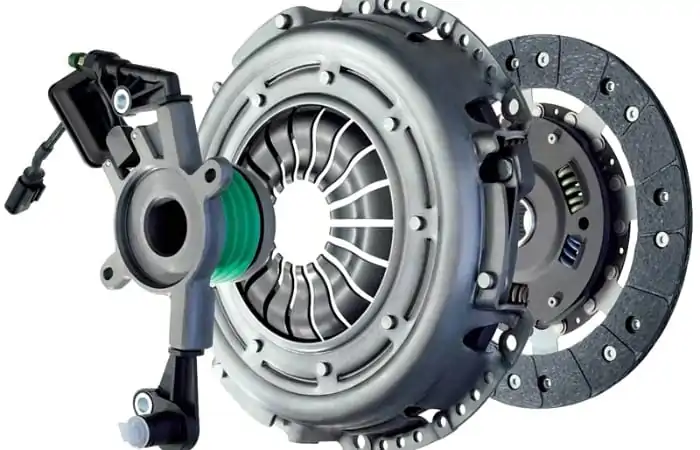
- Shafts and gears. These elements are present in any gearbox. Their purpose is to transmit torque from the motor to differential, transfer box or cardan, as well as change the speed of rotation of the drive wheels. A set of gears provides a reliable grip of the shafts, so that the power forces of the motor are transmitted to the drive wheels. One type of gear is fixed on the shafts (for example, a block of intermediate gears, which are made as a single piece with an intermediate shaft), the other is movable (for example, sliding, which are installed on the output shaft). To reduce noise during operation of the gearbox, the gears are made with oblique teeth.
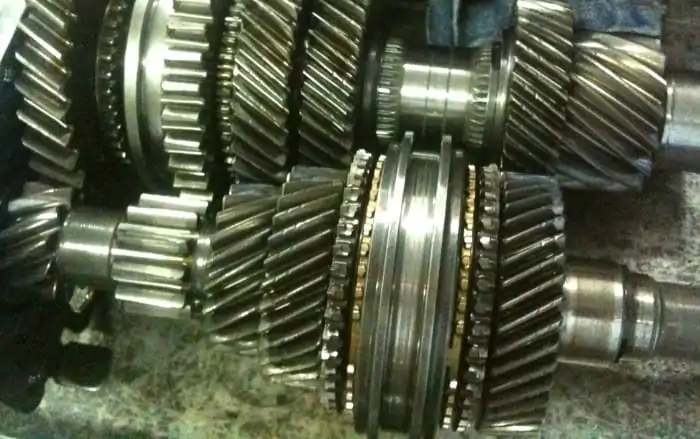
- Synchronizers The structure of these parts provides equalization of the rotation speed of two independent shafts. After the rotation of the primary and secondary shafts is synchronized, the blocking clutch is connected to the gear gear using a spline connection. This mechanism eliminates shock when you turn on the speed, as well as premature wear of the gears connected.
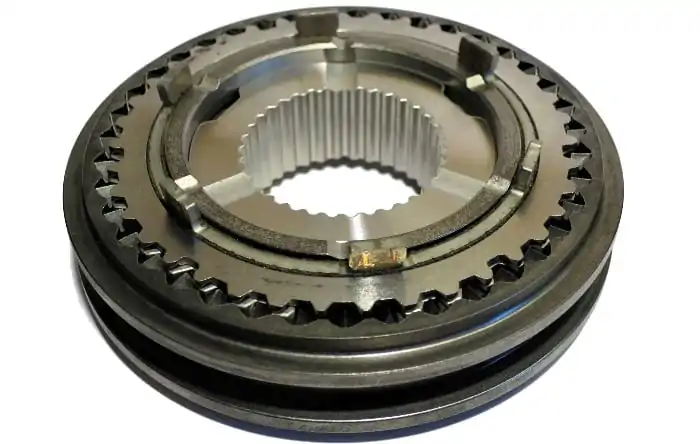
The photo shows one of the options for a mechanical box in the context:
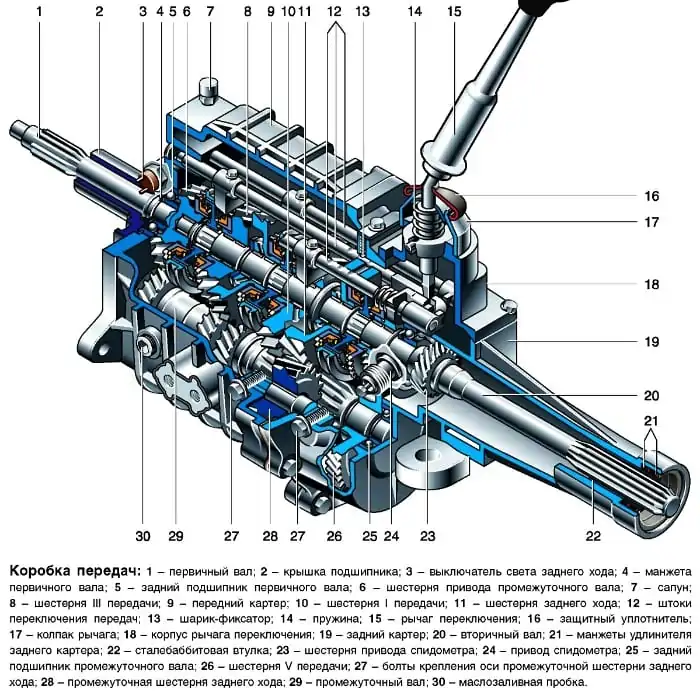
Types of manual gearboxes
Manual transmission device is of several types. Depending on the number of built-in shafts, there are:
- twin-shaft (installed on passenger cars with front-wheel drive);
- three-shaft (used for rear-wheel drive and freight vehicles).
By the number of steps (gears), gearboxes are 4, 5 and 6 speed.
Manual gearbox
The design of a manual transmission implies the following components:
- Carter, containing the main transmission parts.
- Shafts: primary, secondary, intermediate and optional (for reverse).
- Synchronizer. He is responsible for the lack of jerking and quiet running gearbox elements when switching gears.
- Gear shift mechanism including locking and locking components.
- Shift lever (located in the passenger compartment).
The scheme presented below will help to understand the structure of the manual transmission in more detail: 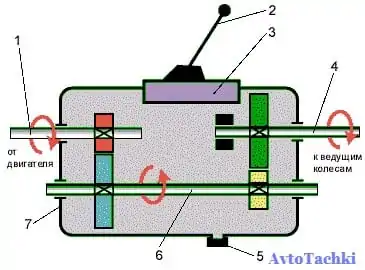 The number 1 indicates the location of the primary shaft, the number 2 indicates the lever for changing gears in the gearbox. The number 3 indicates the switching mechanism itself. 4, 5 and 6 - to the secondary shaft, drain plug and countershaft, respectively. And the number 7 indicates the crankcase.
The number 1 indicates the location of the primary shaft, the number 2 indicates the lever for changing gears in the gearbox. The number 3 indicates the switching mechanism itself. 4, 5 and 6 - to the secondary shaft, drain plug and countershaft, respectively. And the number 7 indicates the crankcase.
It is worth considering that the transmission of a three-shaft and two-shaft type cardinally differ in structure and principle of operation.
Twin-shaft gearbox: device and principle of operation
In such a manual transmission, the torque comes from the internal combustion engine to the input shaft due to the existing clutch. The gears of the shaft, located in the same place as the synchronizers, constantly turn around the axis. Torque from the secondary shaft is transmitted through the main gear and the differential (responsible for the rotation of the wheels with different angular speeds) directly to the wheels of the car. 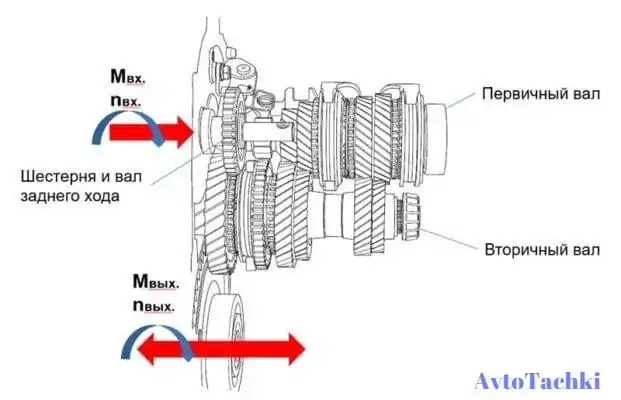 The driven shaft has a securely mounted final drive gear. The gear change mechanism is located in the case of the box and includes forks and rods used to change the position of the synchronizer clutch. To reverse, use an additional shaft with a built-in intermediate gear.
The driven shaft has a securely mounted final drive gear. The gear change mechanism is located in the case of the box and includes forks and rods used to change the position of the synchronizer clutch. To reverse, use an additional shaft with a built-in intermediate gear.
Three-shaft gearbox: device and principle of operation
A manual transmission of a three-shaft type differs from the previous one by the presence of 3 working shafts. In addition to the drive and driven shafts, there is also an intermediate one. The primary is paired with a clutch and is responsible for transmitting torque to the intermediate shaft through the corresponding gear. Due to this design feature, all 3 shafts are in constant gearing. The position of the intermediate shaft relative to the primary is parallel (necessary to fix the gears in one position). 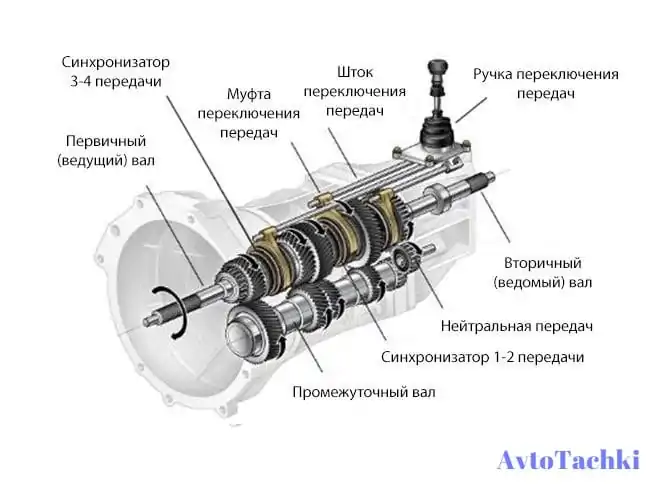 The specific structure of the mechanical box implies the presence of two shafts on the 1st axis: secondary and primary. The gears of the driven shaft are able to spin freely, because they do not have a rigid fixation. The shift mechanism here is located on the hull of the gearbox. It is equipped with a control lever, stem and forks.
The specific structure of the mechanical box implies the presence of two shafts on the 1st axis: secondary and primary. The gears of the driven shaft are able to spin freely, because they do not have a rigid fixation. The shift mechanism here is located on the hull of the gearbox. It is equipped with a control lever, stem and forks.
What are the faults
Often, a mechanical transmission breaks down when the driver shifts gears roughly. When transferring a transmission from one to another with sudden movements, failure cannot be avoided. This practice of using a gearbox will lead to a breakdown of the switching mechanism and synchronizers.
Advantages and disadvantages of gearbox
When it is possible to use mechanisms with different characteristics, motorists tend to compare their pros and cons. The mechanical box also has its advantages and disadvantages.
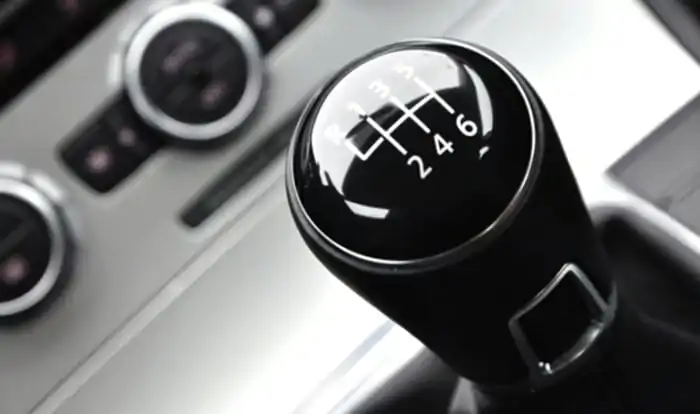
The advantages include:
- Less weight and cheaper compared to an automatic transmission;
- allows the driver to control the interval between gear changes, increasing dynamics during acceleration;
- with skillful use, a motorist can reduce fuel consumption;
- high efficiency;
- the design is simple, due to which the mechanism is highly reliable;
- easier to repair and maintain than automatic counterparts;
- when driving on the road it is easier to choose the appropriate mode, more sparing for the engine;
- the skill of driving a car with a manual transmission is given more attention when training new drivers. In some countries, the rights of newcomers are marked "without the right to drive a car with manual transmission" if they handed over driving in a car with an automatic transmission. In the case of training in "mechanics" he is allowed to control different cars of the corresponding category;
- You can tow a car. The car on the machine can also be towed, only in this case there are certain restrictions.
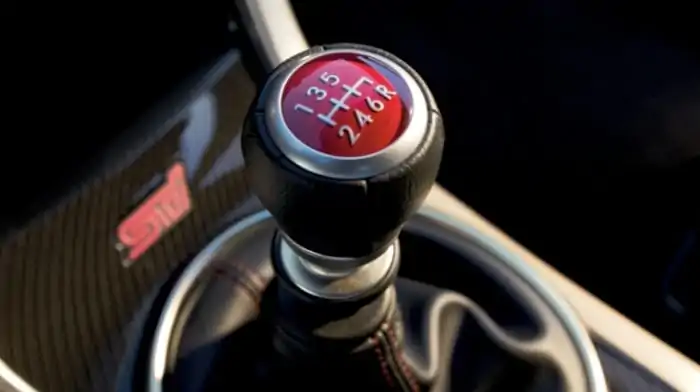
The disadvantages of mechanics:
- for lovers of comfort and those who are tired of the constant control of the current transmission, the best option is automatic transmission;
- requires periodic replacement of the clutch;
- for smooth switching requires a certain skill (automatic analog provides acceleration without jerks and dips).
Towing a car applies to both advantages and disadvantages. The lack of free towing cars - it is easier to steal. But if the car does not start due to a dead battery (they listened to music for a long time on a picnic), then it can be started by accelerating at neutral speed and engaging the gear. In this case, the torque goes in the opposite direction - from the wheels to the motor, simulating the operation of the starter. This is a plus mechanics.

With many “automatic machines” this will not work, because the clutch discs are pressed against each other due to the pressure of the oil pump running with the engine running. During the rotation of the wheels, the whole gearbox works in most models, so pushing the car is much more difficult than a vehicle on the "mechanics". Due to the lack of lubrication of gears, auto mechanics do not recommend towing cars with automatic gearboxes over long distances.
As you can see, a manual gearbox is an integral unit, without which the car will not go, no matter what the engine power. "Mechanics" allows you to choose the speed mode of the car yourself, squeezing the maximum power out of the motor. It is cheaper and simpler than automatic transmission, although it is much inferior to the “automatic” in comfort while driving.
Common questions:
What is a manual transmission? Manual transmission is a gearbox in which the choice of speed is completely carried out by the driver. In this case, the experience of the motorist and his understanding of the operation of the gearshift mechanism play a key role.
What is the gearbox made of? The manual transmission consists of a clutch basket that connects to the flywheel and input shaft; intermediate and secondary shafts with gears; shift mechanism and shift lever. Additionally, a shaft with a reverse gear is installed.
Where is the gearbox in the car? In a car, the manual transmission is always located near the engine. A car with rear-wheel drive has a longitudinal arrangement of the box, and in front-wheel drive it is transverse.
